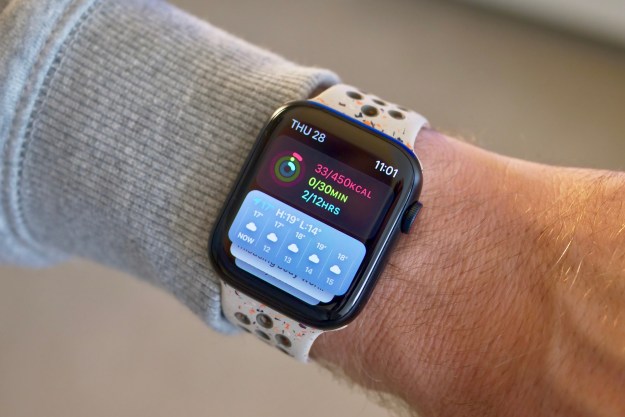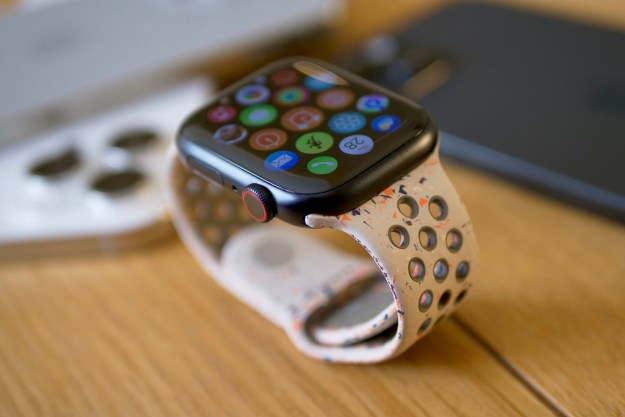The Apple Watch is the best smartwatch you can buy today (provided you own an iPhone), and six weeks into wearing the Series 7, my opinion about it as a smartwatch hasn’t changed — it’s effortlessly simple to use, metronomically reliable, and completely customizable.
Now that I’ve worn it for a decent length of time, it has gathered plenty of health and activity data, and Apple Health has started to show the value in committing to wearing the Apple Watch every day. Because I think the Series 7 is excellent and encourage people to buy one, I want to show what you get long-term when you really invest in it. So has it been worth it, and is there any real value in the health data it presents?
Everyday wear
For the Apple Watch to collect its data, you have to wear it, and that’s not going to happen if it’s annoying or uncomfortable. With the right band, the Series 7 practically disappears on your wrist, so even those who don’t enjoy wearing a watch will quickly get used to it. And the variety of bands available means that if one doesn’t feel right, there will almost certainly be another that will.

While I personally take the watch off overnight to let a different wearable track sleep, you don’t have to as, again, with the right band, it’s not uncomfortable to wear when sleeping. The fast battery charging and two-day use means it can spend most of the time on your wrist, should you want it to. It’s hassle-free, looks great, and doesn’t get annoying. It’s the perfect everyday smartwatch.
But you will still need to see some benefit to wearing it if you’re going to continue doing so. Some smartwatches can make life difficult when it comes to tracking activity, whether it’s disabling features to help extend battery life or due to a complicated and unreliable app, but the Series 7 and WatchOS 8 avoid all this right from the very moment you start using it.
How I (didn’t) set Apple Health and the Series 7 up
What makes the Apple Watch so easy to live with is the way you set it up, because you really don’t have to do anything. I haven’t altered any of the default settings, it didn’t require additional apps, and third-party health apps only need telling once whether they can share data with Apple Health or not. It takes almost no effort at all, and because Apple doesn’t make its battery life claims based around not having certain features active all the time, everything that makes the Watch useful is enabled by default.
You put it on, it works, and the information it collects is presented in the Apple Health and the Fitness apps installed on your phone. As seamless as this all is, I still don’t see the point of having two apps when the functionality could be amalgamated into one, especially when some features are still offloaded to the Watch. For example, you can’t change your daily activity goals through one of these apps, and instead can only alter them on the Watch.
Apple Health works well with other apps and devices, too. It collects data from my Oura Ring and Withings Health Mate app, and if you’re prepared to dig around a little in Health, it’s obvious where the app is taking its data from. This is helpful when looking at sleep trends in particular, as although WatchOS 8 is better at sleep tracking than before, it’s no match for the Oura Ring or Withings Sleep Analyzer. Apple Health’s breakdown of its sources ensures you always know where the data is coming from.
Trendy data
Apple’s data is presented in both graph and text form, with trend data and information given for individual days, by month, by six months, or for longer if applicable. In the Apple Health app, trends are clearly labeled with a “trending higher” or “trending lower” label, making it easy to see where you’re succeeding or not paying enough attention. This applies throughout, with each section saying how you’re doing compared to a period of time in the past.

It’s not just the average amount of steps or heart rate either. There’s plenty of variation, with trends on standing hours, active energy, blood oxygen, sound levels, handwashing time, heart rate variability, respiratory rate, and headphone audio levels. If you’re motivated and want to go deeper, there is a lot of information in Apple Health.

Like most fitness trackers, there isn’t a great deal of information on what all the data means, but at least there is some, although it can be a little hit-or-miss. For example, it tells you the average respiratory heart rate people should expect to see, but not the average resting heart rate. It’s unclear whether this is down to regulatory or legal issues, as a quick internet search soon gives you the general answer.
Making use of the data
It’s all very well collecting and presenting data, but have I found it interesting, or better yet, helpful over the last weeks? Yes, I’ve found it helpful for two main reasons: The first is to determine if I am increasing the amount of activity I have each day, and the other is to look at whether my body is reacting negatively to outside stresses or not. Apple’s trend data shows all this at a glance, once I’d spent some time familiarizing myself with the layout and worn the Watch for a few weeks.

For example, I can see my active energy consumption has increased compared to previous weeks, my average heart rate has stayed consistent for months, and my respiratory rate doesn’t vary. It helps me see if the changes I make work, but more importantly, it stops me from relying on my memory, as I sometimes can’t remember if I’m doing anything differently. I can also see whether my body is affected by stress, something that probably only becomes apparent over time, highlighting how long-term tracking can be helpful.

I also like that it’s not all about steps and calories. I’m trying to increase my use of the Mindfulness app by using the reminders, and because Health also tracks Mindfulness minutes, I can see if my use has really increased or if I’m just snoozing the reminders and not coming back to the app. Health also syncs mindfulness data from the Oura Ring app, so even if I use an alternative source, it still remains accurate.
Is it for me?
My understanding of the data, and its potential importance when identifying changes in my routine or health, only comes from wearing the Apple Watch regularly. I’m not an athlete, so a wearable that provides really in-depth data based around specific sports — hardcore runners, for example — is totally unnecessary for me. The Apple Watch provides the right amount of information and depth for me as a casual exerciser interested in general health.
While the Watch and Apple Health are mostly fuss-free, it’s still limited in actual advice based on it data. There is a decent degree of information around what the data means, but to understand and potentially take action from it, you have to do your own research. Perhaps more crucially, you should also look at the data on a regular basis as Apple Health is notification-light, and it doesn’t actively tell you about trend changes. Not being overrun with notifications is a good thing, though, and I like that the app presents data in a palatable manner where I can look at just one page and get all the details I need.
As I continue to use the Apple Watch Series 7 every day, I am seeing value from its health tracking. The data it provides is in-depth without being too complex, and the graphs are clear, plus it helps me see where I’m improving. I also appreciate that when I use the Health app, I don’t have to spend ages looking for the right menu or deciphering masses of data. All this comes without the need to provide much beyond your basic information, or make sure all the features are active. I love this simplicity.
To commit to a smartwatch, it not only needs to look good and be comfortable on your wrist, but it also needs to deliver the right level of functionality and add value to your life long-term. So far, the Apple Watch Series 7 is succeeding in all these areas.
Editors' Recommendations
- I keep forgetting about the Apple Watch Series 9’s coolest feature
- Nomad’s new iPhone case and Apple Watch band may be its coolest yet
- The 7 biggest features we expect to see in iOS 18
- Apple may stop updating one of its best Apple Watches this year
- Samsung Galaxy Watch 7: news, rumored price, release date, and more



